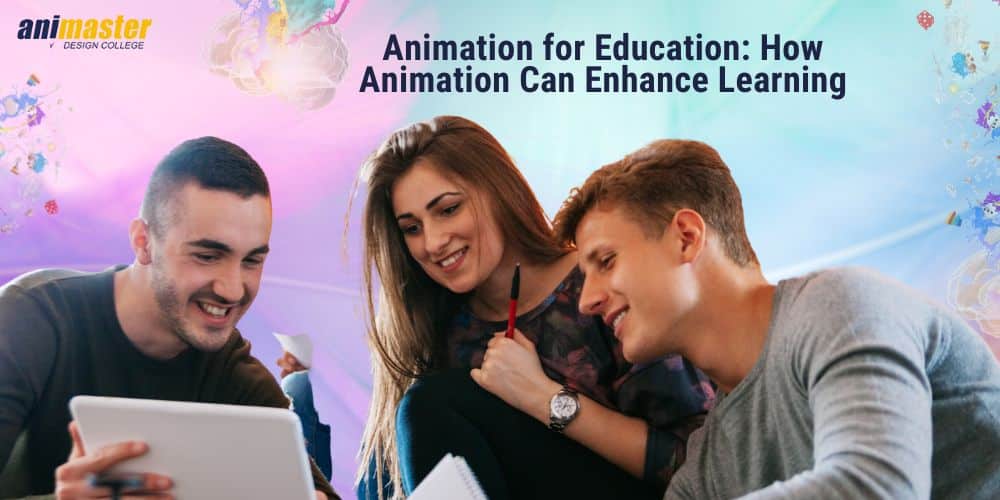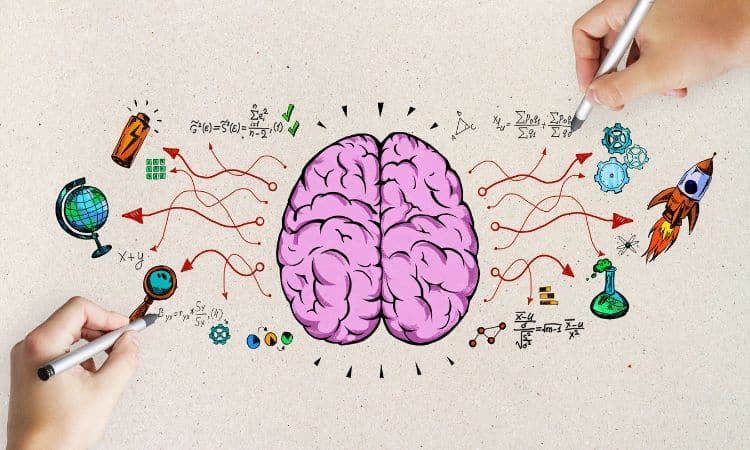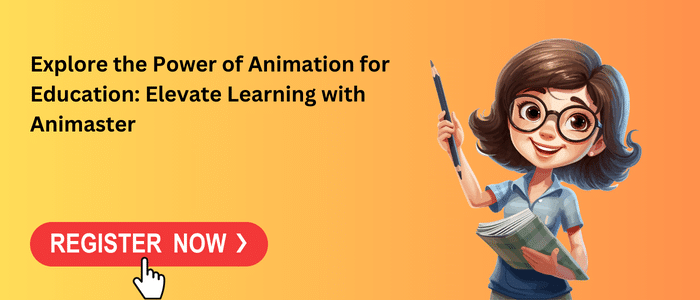
Animation for Education: How Animation Can Enhance Learning
Animation uses visual aids to educate, is a very effective and well-tested method of learning, brings a subject to life, and captures the audience’s interest. Watching it may be enjoyable. The interactive learning opportunities provided by the Animation for Education games and tests assist to clarify and demonstrate more difficult ideas.
Learners may synthesize their knowledge and comprehension of crucial subject topics with the use of animation that is designed with the purpose of simplifying abstract concepts with a visually appealing design. This may be accomplished by introducing animated characters to walk students through difficult concepts or by using other captivating visual elements to reinforce important ideas.
What is Animation?
Animation is the process of showing a series of static pictures that just slightly differ from one another while giving the impression of motion and change. It is a process that entails modifying illustrations, photos, or computer-generated graphics to produce moving visuals. Animations are employed in a range of settings, including leisure, marketing, instruction, and more.
Is animation a valuable resource for learning?
Animation for Education does really prove to be a valuable tool for education. Its ability to simplify complex subjects for learners, engage learners visually, and offer flexibility in educational techniques solidifies it as a critical component of modern education.
The Benefits of Using Animation For Education

1.) Complex Concepts Simplified:
Complex information may be streamlined and simplified using animations. They can communicate ideas far more clearly than readers of text or listeners of audio narration can.
Animations have the singular capacity to display minute details while also eloquently and entertainingly expressing crucial ideas. They can be quite useful for demonstrating intricate mechanical operations or equipment in a way that is not possible with other media. This is especially true for professions where it would not be feasible to physically illustrate the process being taught, such as engineering, medicine, or the sciences.
2.) Visual Engagement:
In order to provide students clarity on some topics that are more complicated, teachers frequently need to concentrate their teaching efforts. To this end, 3D animated subject films can be utilised to give students in-depth information and explanations about these concepts. Students of all IQ levels are capable of displaying exceptional knowledge.
Animation for education make it simple to explain ideas that are difficult to grasp. This aids students in better conceptual visualisation. Using thorough and flexible animation learning modules, young brains’ imaginations may soar.
3.) Versatile Learning Tool
Animation for Education is adaptable enough to accommodate a wide range of learning styles, including auditory, visual, and kinesthetic ones. This ensures that instructional information is effectively delivered to a wide range of audiences.
4.) Improve the Learning Experience
Animation allows us to associate thoughts with meaningful pictures, which are stored in our long-term memory. Since no two students are alike, giving them access to engaging animated movies is a terrific approach to make sure that all learning preferences are taken into account.
Furthermore, when the appropriate pictures are present to supplement the text, it is simpler for students to assimilate knowledge in chunks. Compared to text- or audio-based explanations, eLearning content has the potential to be more influential.
5.) Improve Learning By Up to 400%
Visuals have been shown to increase learning capacity by up to 400%.
Our brains are built to understand how items relate to one another, making understanding simple. Therefore, it is difficult to overlook the reality that visual information is a crucial component of learning, understanding, and remembering new knowledge.
Animation allows for the transformation of intangible processes and abstract ideas into something concrete and approachable. A memory is created when an emotional reaction and visual stimulus combine. Our overall performance improves when learning involves our long-term memory more.
6.) Motivate Students
An excellent technique to support teaching is producing films that employ animation to deconstruct complicated material and make it enjoyable for learners. Particularly for disciplines like math, physics, or geography where teaching formulae, systems, and procedures are necessary.
7.) Immediate Feedback
Animation for Education enables fast feedback, enabling students to evaluate their understanding right away. This quick feedback approach encourages self-evaluation and helps students identify areas that need improvement.
Choose Animaster for Your Animation Career
- The team of professors at Animaster, being one of the best animation College, has an extensive amount of professional expertise, enhancing the classroom with the real-world skills necessary for success in the cutthroat animation business.
- The institute provides state-of-the-art amenities, such as spacious studios and access to the most recent animation software and hardware. This guarantees that students have first-hand exposure to tools used in the business
- The BSc Animation in Bangalore programme at Animaster offers a thorough curriculum that covers a range of animation methods and aesthetics. Students get a well-rounded education that prepares them for a variety of professions in the animation industry, including character design, visual effects, and 2D and 3D animation.
- Animaster maintains solid relationships with top production companies and animation studios. These relationships give students access to beneficial networking opportunities, internships, and routes to landing jobs at reputable firms.
- Animaster is dedicated to the success of its students and provides strong placement support. In order to improve job placement possibilities, this also includes help with résumé creation, interview practice, and access to a wide network of industry connections.
- Throughout their academic careers, Animaster actively encourages students to participate in practical projects. Students may put their newly gained skills to use in real-world situations thanks to this practical approach, which results in a captivating portfolio that highlights their abilities to future employers.
- Animaster, which is located in the energetic city of Bangalore, offers a multicultural setting that enhances the educational process. Working together, students from various backgrounds prepare them for the worldwide animation business. Bangalore, a centre for animation and technology, provides a wealth of chances for networking and job advancement.

There are several reasons to choosing Animaster Design College for your animation career, including knowledgeable instructors, state-of-the-art facilities, a thorough curriculum, industry affiliations, placement help, hands-on projects, and exposure to a varied learning environment. Together, these elements offer a well-rounded education and a solid starting point for a fulfilling career in the exciting and engaging world of animation.
FAQs
What is educational animation, and how does it differ from regular animation?
Specialized animation created specifically to impart educational material is known as “educational animation.” In contrast to ordinary animation, its major goal is to teach and enlighten rather than to amuse, concentrating on outlining complicated topics in a fun and instructive way.
Can animation be used for teaching subjects other than science and math?
Yes, other disciplines outside math and science may be taught via animation. It’s a flexible tool that works for many disciplines, including history, languages, literature, and even the arts. It is useful in all areas of education due to its visual appeal and capacity to clarify concepts.
How can animation support remote and distance learning?
By offering online access to interesting visual information, animation helps remote and distance learning. It promotes active learning, encourages interaction with difficult topics, and lets students study at their own speed while bridging educational gaps caused by distance.
Are there any potential challenges or drawbacks to using animation in education?
The need for technical know-how, expenses and assuring accessibility for all students are all potential barriers to employing animation in education. Over-reliance on animation and little connection with real-world events might be some disadvantages.



